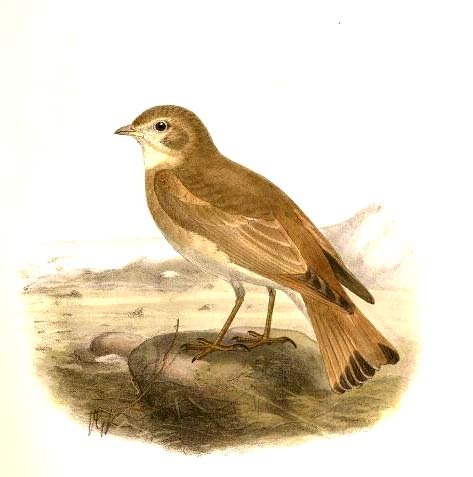Superregnum: Eukaryota
Cladus: Unikonta
Cladus: Opisthokonta
Cladus: Holozoa
Regnum: Animalia
Subregnum: Eumetazoa
Cladus: Bilateria
Cladus: Nephrozoa
Superphylum: Deuterostomia
Phylum: Chordata
Subphylum: Vertebrata
Infraphylum: Gnathostomata
Megaclassis: Osteichthyes
Cladus: Sarcopterygii
Cladus: Rhipidistia
Cladus: Tetrapodomorpha
Cladus: Eotetrapodiformes
Cladus: Elpistostegalia
Superclassis: Tetrapoda
Cladus: Reptiliomorpha
Cladus: Amniota
Classis: Reptilia
Cladus: Eureptilia
Cladus: Romeriida
Subclassis: Diapsida
Cladus: Sauria
Infraclassis: Archosauromorpha
Cladus: Crurotarsi
Divisio: Archosauria
Cladus: Avemetatarsalia
Cladus: Ornithodira
Subtaxon: Dinosauromorpha
Cladus: Dinosauriformes
Cladus: Dracohors
Cladus: Dinosauria
Ordo: Saurischia
Cladus: Eusaurischia
Subordo: Theropoda
Cladus: Neotheropoda
Cladus: Averostra
Cladus: Tetanurae
Cladus: Avetheropoda
Cladus: Coelurosauria
Cladus: Tyrannoraptora
Cladus: Maniraptoromorpha
Cladus: Maniraptoriformes
Cladus: Maniraptora
Cladus: Pennaraptora
Cladus: Paraves
Cladus: Eumaniraptora
Cladus: Avialae
Infraclassis: Aves
Cladus: Euavialae
Cladus: Avebrevicauda
Cladus: Pygostylia
Cladus: Ornithothoraces
Cladus: Ornithuromorpha
Cladus: Carinatae
Parvclassis: Neornithes
Cohors: Neognathae
Cladus: Neoaves
Cladus: Telluraves
Cladus: Australaves
Ordo: Passeriformes
Subordo: Passeri
Infraordo: Passerida
Superfamilia: Passeroidea
Familia: Alaudidae
Genus: Ammomanes
Species: Ammomanes cinctura
Subspecies: A. c. arenicolor – A. c. cinctura – A. c. zarudnyi
Name
Ammomanes cinctura (Gould, 1839)
Synonymy
Melanocorypha cinctura (protonym)
Ammomanes cincturus (orth. err.)
References
Gould, J. 1839. Part 3 Birds. In: The Zoology of the voyage of H.M.S. Beagle, under the command of Captain Fitzroy, R.N., during the years 1832-1836. Edited and superintended by Charles Darwin. Smith, Elder & Co. London. 1841. 156 pp., 50 tt. DOI: 10.5962/bhl.title.14216 BHL Reference page. pt.11: 87
Vernacular names
العربية: قنبرة بادية مصرية
brezhoneg: Alc'hweder tek
català: Terrerola cuabarrada
Cymraeg: Ehedydd diffeithwch cynffonresog
dansk: Lille Ørkenlærke
Deutsch: Sandlerche
English: Bar-tailed Lark
español: Terrera Colinegra
euskara: Txoriandre buztanbeltz
فارسی: چکاوک سردمسیاه
suomi: Pikkuaavikkokiuru
français: Ammomane élégante
magyar: Homoki pacsirta
Nederlands: Rosse woestijnleeuwerik
norsk: Mørkhalelerke
svenska: Sandökenlärka
Türkçe: Küçük çöl toygarı
中文: 斑尾漠百灵
The bar-tailed lark, or bar-tailed desert lark, (Ammomanes cinctura) is a species of lark in the family Alaudidae. Two other species, the rufous-tailed lark and the Cape clapper lark are both also sometimes referred to using the name bar-tailed lark. It is found from Morocco to Pakistan. Its natural habitat is hot deserts. This is in many places a common species, but elsewhere rather less common. It has a very wide distribution and faces no obvious threats, but surveys have shown that it is slowly decreasing in numbers. The International Union for Conservation of Nature has rated its conservation status as being of "least concern".[1]
Taxonomy and systematics
The bar-tailed lark was originally placed in the genus Melanocorypha.[2] Alternate names for the bar-tailed lark include: bar-tailed finch-lark, black-tailed desert lark, black-tailed lark, and black-tailed sand lark.
Subspecies
Three subspecies are recognized:[3]
A. c. cinctura - (Gould, 1839): Found on Cape Verde Islands
A. c. arenicolor - (Sundevall, 1850): Originally described as a separate species in the genus Alauda. Found in North African deserts to the Sinai Peninsula and western Arabia
Persian rufous-tailed finch lark (A. c. zarudnyi) - Hartert, 1902: Found in eastern Iran, southern Afghanistan and southern Pakistan
Description
The bar-tailed lark is similar to the desert lark in appearance, but at 14 to 15 cm (5.5 to 5.9 in), is slightly smaller, with a smaller, more domed head, a smaller beak, thinner legs and a shorter tail. The upper parts are sandy-buff washed with grey, while the underparts are whitish with little if any streaking, and the breast and flanks washed with buff. The rufous wings have dark trailing edges and the rufous tail has a terminal black band.[4]
Distribution and habitat
The bar-tailed lark has a large distribution across North Africa, the Arabian Peninsula, the Middle East and western Asia. Its range includes Afghanistan, Algeria, Bahrain, Cape Verde, Chad, Egypt, Iran, Iraq, Israel, Jordan, Kuwait, Libya, Mali, Mauritania, Morocco, Niger, Oman, Pakistan, Qatar, Saudi Arabia, Sudan, Syria, Tunisia, United Arab Emirates, Western Sahara and Yemen.[1] Its typical habitat is sandy or stony desert or semi desert, with low scrubby vegetation. It is generally shier than the desert lark and has a preference for level ground whereas the desert lark tends to frequent rocky slopes and hillsides.[4]
References
BirdLife International (2019). "Ammomanes cinctura". IUCN Red List of Threatened Species. 2019: e.T22717236A155455024. doi:10.2305/IUCN.UK.2019-3.RLTS.T22717236A155455024.en. Retrieved 12 November 2021.
"Ammomanes cinctura - Avibase". avibase.bsc-eoc.org. Retrieved 2016-11-18.
"IOC World Bird List 6.4". IOC World Bird List Datasets. doi:10.14344/ioc.ml.6.4.
Mark Beaman; Steve Madge (1998). The Handbook of Bird Identification: For Europe and the Western Palearctic. Christopher Helm. p. 541. ISBN 978-0-7136-3960-5.
Retrieved from "http://en.wikipedia.org/"
All text is available under the terms of the GNU Free Documentation License


